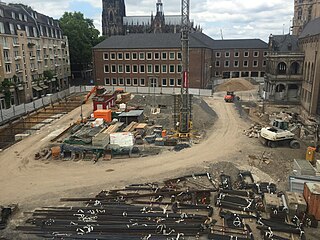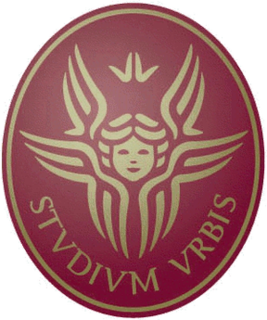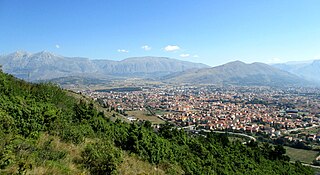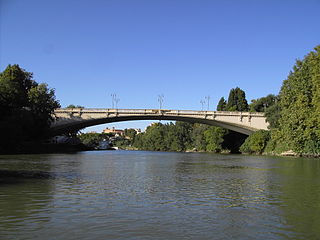Engineer Filippo Fiorentini founded the Fiorentini & C. S.p.A. factory of excavators in 1919 in Rome, Italy. He imported and distributed construction equipment. During the time of Fascism, restrictions banned import and Ing. Fiorentini started his manufacturing plant in Via Tiburtina near Stazione Tiburtina (San Lorenzo, in Roma) for the construction of excavators such as scrapers/draglines and cranes under the license of an American company named Bucyrus.

Engineers, as practitioners of engineering, are professionals who invent, design, analyze, build, and test machines, systems, structures and materials to fulfill objectives and requirements while considering the limitations imposed by practicality, regulation, safety, and cost. The word engineer is derived from the Latin words ingeniare and ingenium ("cleverness"). The foundational qualifications of an engineer typically include a four-year bachelor's degree in an engineering discipline, or in some jurisdictions, a master's degree in an engineering discipline plus four to six years of peer-reviewed professional practice and passage of engineering board examinations.

Fascism is a form of radical, right-wing, authoritarian ultranationalism, characterized by dictatorial power, forcible suppression of opposition, and strong regimentation of society and of the economy, which came to prominence in early 20th-century Europe. The first fascist movements emerged in Italy during World War I before it spread to other European countries. Opposed to liberalism, Marxism, and anarchism, fascism is placed on the far-right within the traditional left–right spectrum.

Construction is the process of constructing a building or infrastructure. Construction differs from manufacturing in that manufacturing typically involves mass production of similar items without a designated purchaser, while construction typically takes place on location for a known client. Construction as an industry comprises six to nine percent of the gross domestic product of developed countries. Construction starts with planning, design, and financing; it continues until the project is built and ready for use.
The first excavators (models FB35 and FB38) were entirely built on site from 1930 to 1940. Around the 1930s, Fiorentini also opened a factory in Fabriano.

Fabriano is a town and comune of Ancona province in the Italian region of the Marche, at 325 metres (1,066 ft) above sea level. It lies in the Esino valley 44 kilometres (27 mi) upstream and southwest of Jesi; and 15 kilometres (9 mi) east-northeast of Fossato di Vico and 36 kilometres (22 mi) east of Gubbio. Its location on the main highway and rail line from Umbria to the Adriatic make it a mid-sized regional center in the Apennines. Fabriano is the headquarters of the giant appliance maker Indesit.
Fiorentini machines assisted all major Italian public works from 1930s [ citation needed ]. New models were scheduled to be produced but were delayed by World War II. During the war, in 1943, 117 workers died in the factory attacked by bombs dropped by the American military (Grassi, 2012). Eng. Filippo Fiorentini and his wife died shortly after of broken heart. Their only son, Giuseppe, also an Engineer, had the courage to start a new business activity, and in 1951 he was so successful that he was ranked at the top of Rome tax payers. The Ing.F.Fiorentini & C. S.P.A. relocated further along the Tiburtina road, to a bigger plant, more modern and very effective. After World War II, the company produced FB50, 60, 100 and the massive FB200 that could hold 1000 tons. In the 1960s, there were some design changes. The company also produced bulldozers and hydraulic excavators. By studying Russian, Ing. Giuseppe travelled to the Soviet Union and sold two big contracts with their ministry Machino Import, of some 1000 cranes to be used in the enormous project of the Transiberian Pipeline.

World War II, also known as the Second World War, was a global war that lasted from 1939 to 1945. The vast majority of the world's countries—including all the great powers—eventually formed two opposing military alliances: the Allies and the Axis. A state of total war emerged, directly involving more than 100 million people from over 30 countries. The major participants threw their entire economic, industrial, and scientific capabilities behind the war effort, blurring the distinction between civilian and military resources. World War II was the deadliest conflict in human history, marked by 50 to 85 million fatalities, most of whom were civilians in the Soviet Union and China. It included massacres, the genocide of the Holocaust, strategic bombing, premeditated death from starvation and disease, and the only use of nuclear weapons in war.

A bulldozer or dozer is a crawler equipped with a substantial metal plate used to push large quantities of soil, sand, rubble, or other such material during construction or conversion work and typically equipped at the rear with a claw-like device to loosen densely compacted materials.
At that time the Company had won a technical and commercial battle against other companies from Germany much bigger ones than the Ing. F.Fiorentini & C. of Rome. As the sales were strong, both inside Italy for the reconstruction, and in Russia, the Company hired as many as 1000 employees, who were working in three plants (Rome, Fabriano, in Italy) and Toronto, Ontario, Canada.

Toronto is the provincial capital of Ontario and the most populous city in Canada, with a population of 2,731,571 in 2016. Current to 2016, the Toronto census metropolitan area (CMA), of which the majority is within the Greater Toronto Area (GTA), held a population of 5,928,040, making it Canada's most populous CMA. Toronto is the anchor of an urban agglomeration, known as the Golden Horseshoe in Southern Ontario, located on the northwestern shore of Lake Ontario. A global city, Toronto is a centre of business, finance, arts, and culture, and is recognized as one of the most multicultural and cosmopolitan cities in the world.

Canada is a country in the northern part of North America. Its ten provinces and three territories extend from the Atlantic to the Pacific and northward into the Arctic Ocean, covering 9.98 million square kilometres, making it the world's second-largest country by total area. Canada's southern border with the United States is the world's longest bi-national land border. Its capital is Ottawa, and its three largest metropolitan areas are Toronto, Montreal, and Vancouver. As a whole, Canada is sparsely populated, the majority of its land area being dominated by forest and tundra. Consequently, its population is highly urbanized, with over 80 percent of its inhabitants concentrated in large and medium-sized cities, many near the southern border. Canada's climate varies widely across its vast area, ranging from arctic weather in the north, to hot summers in the southern regions, with four distinct seasons.
In 1956 Count Giuseppe Fiorentini bought a second castle after the San Gallo castle in Nettuno, from prince Barberini, the farm estate and castle of San fabiano. A hunting resort, San Fabiano was useful for its public relations, where he invited many of his clients, such as the Russian Ambassador Rijov, and Mac Cormick of International Harvester. In fact the Company was designing and manufacturing cranes, excavators and crushing plants and represented for Italy the industrial line of H.I.
Count (Male), or Countess (Female), is a historical title of nobility in certain European countries, varying in relative status, generally of middling rank in the hierarchy of nobility. The etymologically related English term, "county" denoted the land owned by a count. Equivalents of the rank of count exist or have existed in the nobility structures of some non-European countries, such as hakushaku during the Japanese Imperial era.

Nettuno is a town and comune of the Metropolitan City of Rome in the Lazio region of central Italy, 60 kilometres south of Rome. A resort city and agricultural center on the Tyrrhenian Sea, it has a population of approximately 50,000.

The International Harvester Company was a United States manufacturer of agricultural machinery, construction equipment, trucks, automobiles, and household and commercial products. Its reorganized successor, after spin-off of several of those businesses, is Navistar International.
But in the sixties, things started to decline economically. After a major setback in his industry in Rome, he took advantage of a national reform, that abruptly stopped the centennial rules of MEZZADRIA, where the Landlord was the owner of everything and the contadini the farmers were living in the farmhouses with the cows, and they were not paying a rent, but the output of their work would be split 50/50 with the Landlord.
In 1975, engineer Giuseppe Fiorentini, the son of the company's founder, filed for bankruptcy and the company was obtained at no cost by another Italian company named Gepi. Gepi then changed its name to Nuova Fiorentini, meaning "New Fiorentini".

Bankruptcy is a legal status of a person or other entity who cannot repay debts to creditors. In most jurisdictions, bankruptcy is imposed by a court order, often initiated by the debtor.














